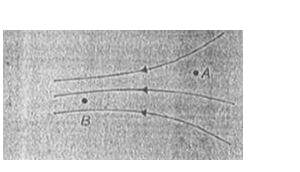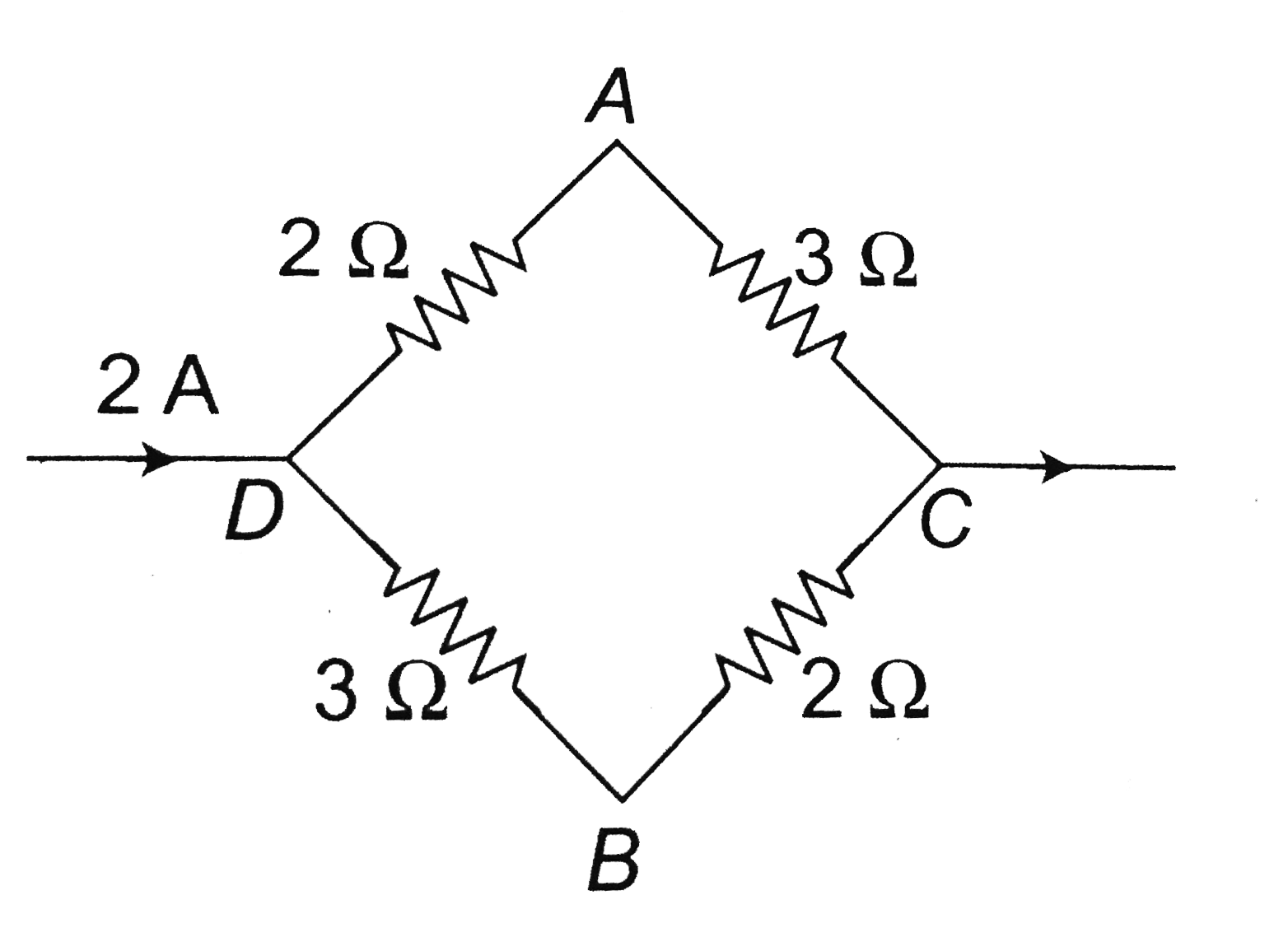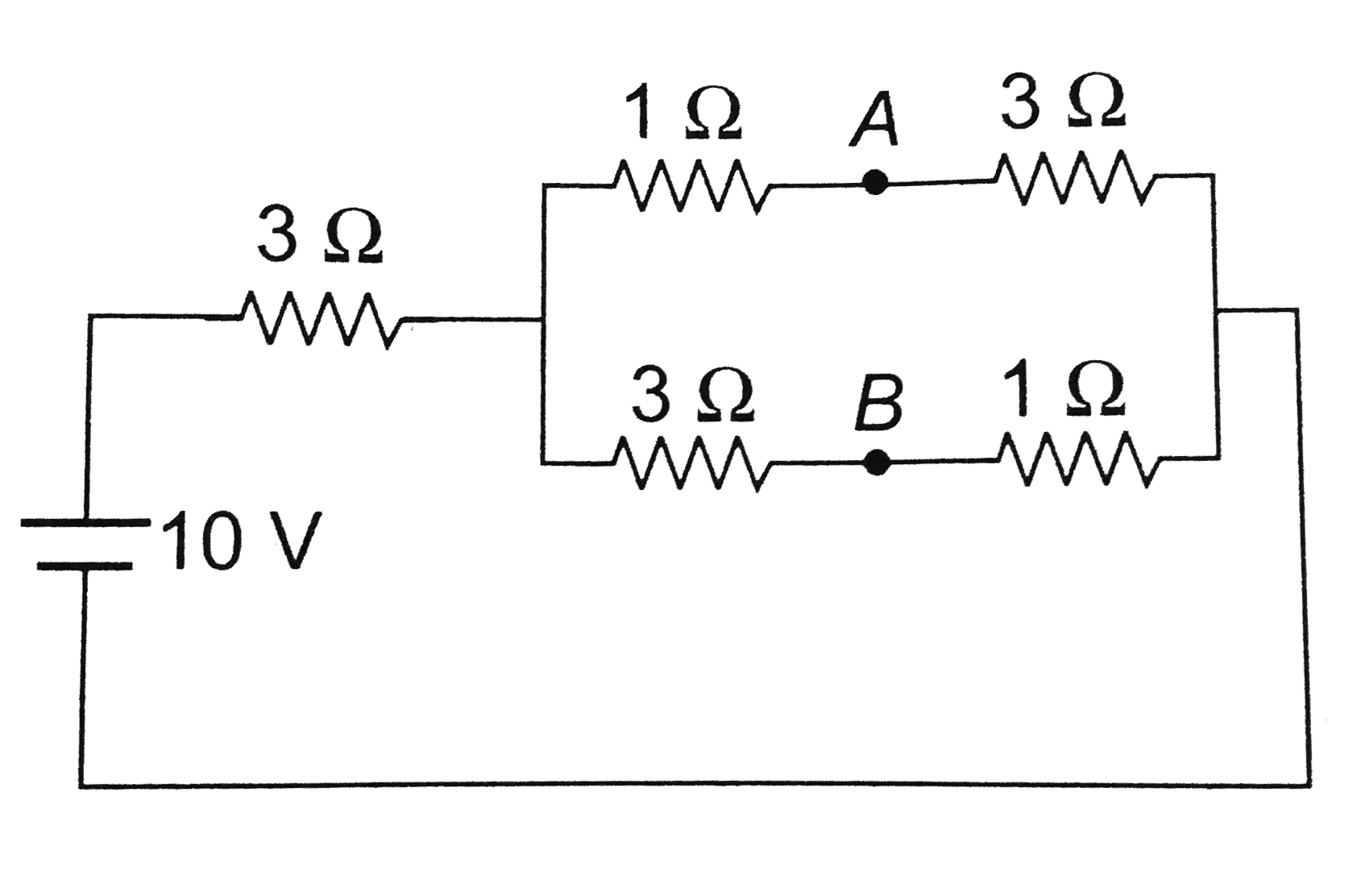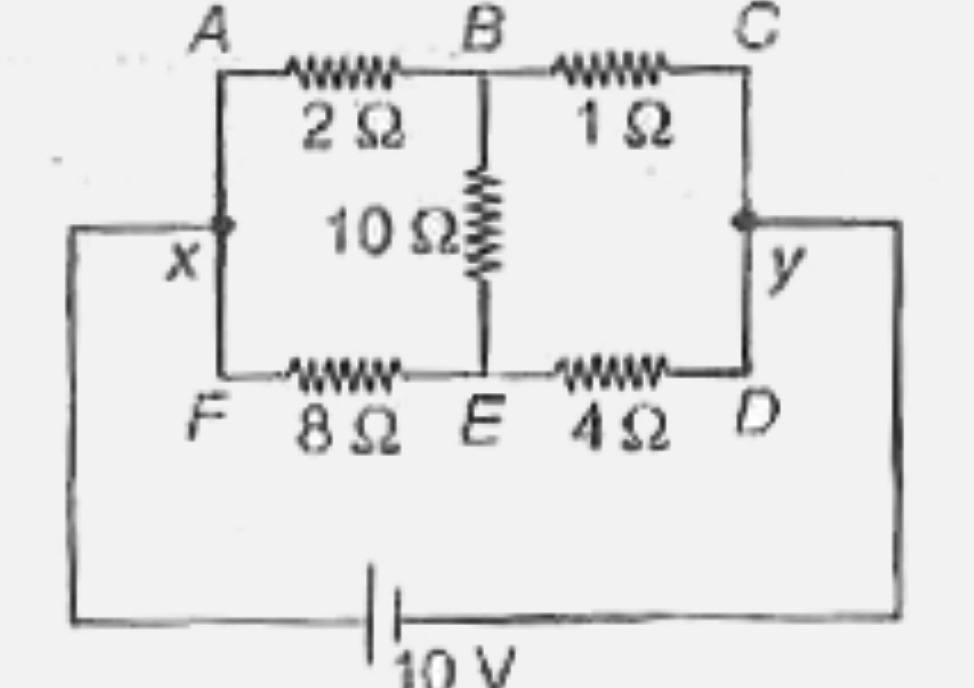Consider
 .
.
The potential difference VA−VB is.
E[C1C4−C2C3(C1+C2)(C3+C4)]
E[C1C4+C2C3(C1+C3)(C2+C4)]
E[C1C3+C2C4(C1+C2)(C3+C4)]
E[C1C3+C2C4(C1+C3)(C2+C4)]
The correct Answer is:A
Let charge be as shown. (Capacitors in series have the same the charge.)
Taking loop containing C1,C2, and E, we get
qC1+qC2−E=0 or q=E[C1C2C1+C2]
Similarly, from loop containing C3,C4, and E, we get
q'C3+q'C4−E=0 or q'=E[C3C4C3+C4]
Now, VA−VB=qC2−q'C
=E[C1C1+C2−C3C3+C4]
=E[C1C4−C3C2(C1+C2)(C3+C4)]
Now VA−VB=E⇒C1C4−C2C3=0
or C1C2=C3V4.
Topper's Solved these Questions
- BOOK - CENGAGE PHYSICS ENGLISHCHAPTER - CAPACITOR AND CAPACITANCEEXERCISE - Integer5videos
CAPACITOR AND CAPACITANCE
- BOOK - CENGAGE PHYSICS ENGLISHCHAPTER - CAPACITOR AND CAPACITANCEEXERCISE - Multile Correct11videos
CAPACITOR AND CAPACITANCE
- BOOK - CENGAGE PHYSICS ENGLISHCHAPTER - ATOMIC PHYSICSEXERCISE - ddp.4.315videos
ATOMIC PHYSICS
- BOOK - CENGAGE PHYSICS ENGLISHCHAPTER - CENGAGE PHYSICS DPPEXERCISE - subjective type51videos
CENGAGE PHYSICS DPP
Similar Questions
In figure two points A and B are located in a region of electric field . The potential difference VB−VA is
 View Solution
View SolutionThe given circuit is the part of a certain circuit. The current through resistors are shown . The potential difference VP−VQ is
 View Solution
View SolutionA current of 2A flows in a system of conductor as shown. The potential difference (VA−VB)
 View Solution
View SolutionA current of 2A flows in a system of conductor as shown. The potential difference (VA−VB)
 View Solution
View SolutionA current of 2A flows in a system of conductor as shown. The potential difference (VA−VB)
 View Solution
View SolutionA battery of e.m.f. 10V is connected to resistance as shown in figure. The potential difference VA−VB between the point A and B is
 View Solution
View SolutionThe work done in carrying a charge of 5μC form a point A to a point B in an electric field is 10mJ. The potential difference (VB−VA) is then
View SolutionAn infinitely long line of linear charge density λ is shown in the figure. The potential difference VA−VB between the two points A and B is
 View Solution
View SolutionA uniform electric field is along x-axis. The potential difference VA−VB=10V is between two points A (2m, 3m) and (4m, 8m). Find the electric field intensity.
View SolutionA combination of five resistors are connected to a cell of emf 10 V as shown in figure. The potential difference VB−VE will be .
 View Solution
View Solution

